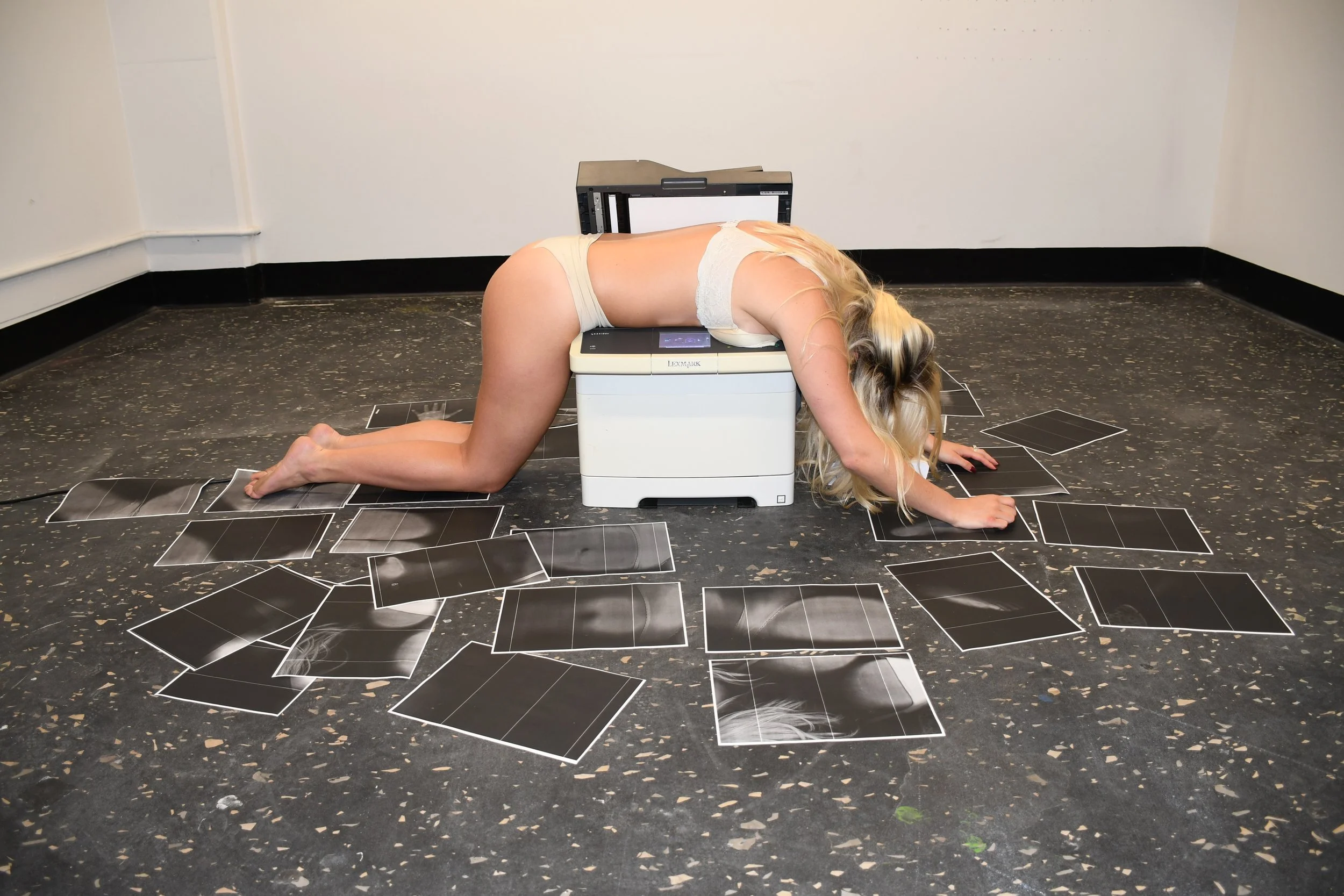
CATALOGUE
NOTE: The artwork consists of:
The installation of the photographs and the printer in the satellite room
Printed photos of the performance live hung near the installation
The poem, which is put in the printer for the audience to walk around and read
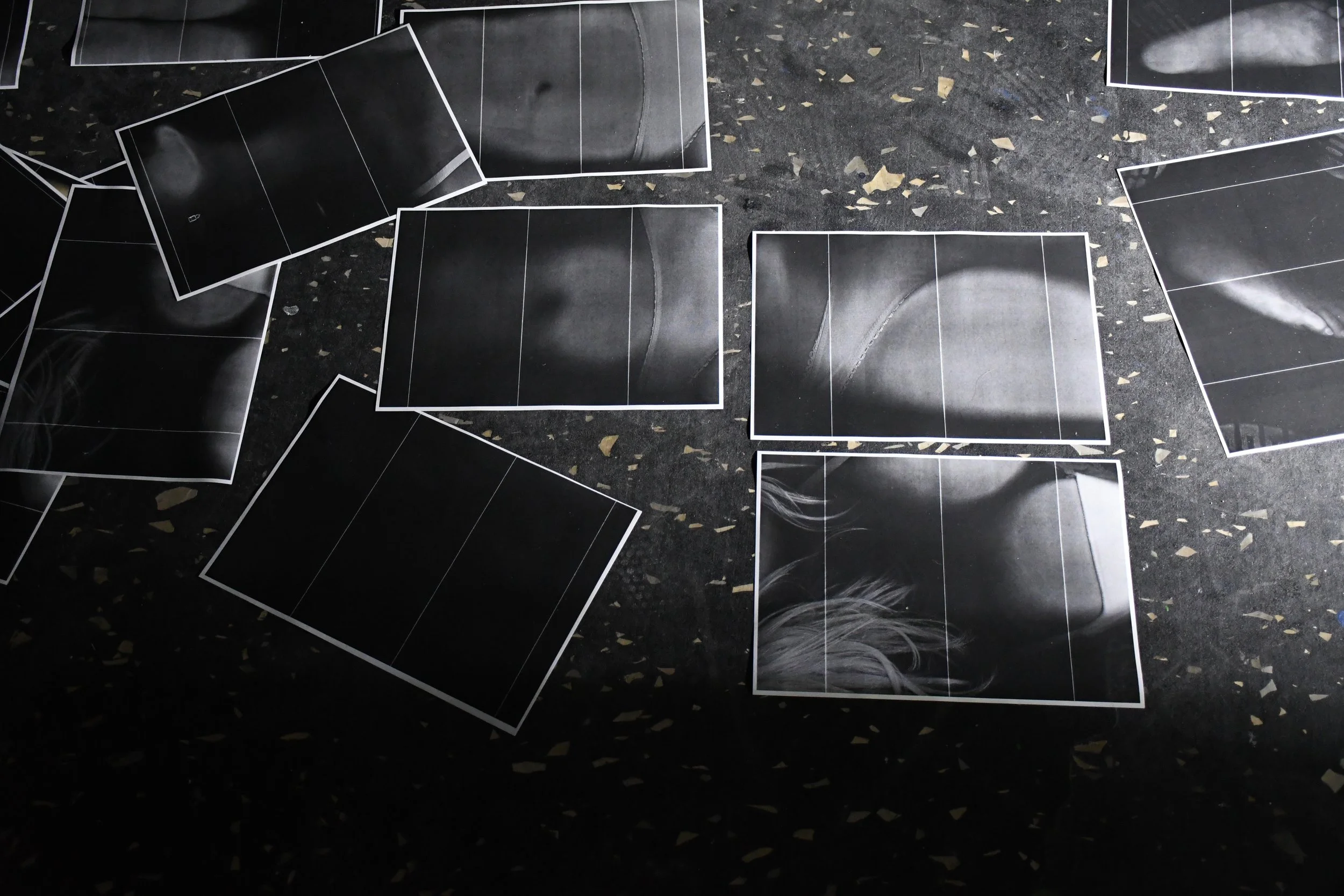
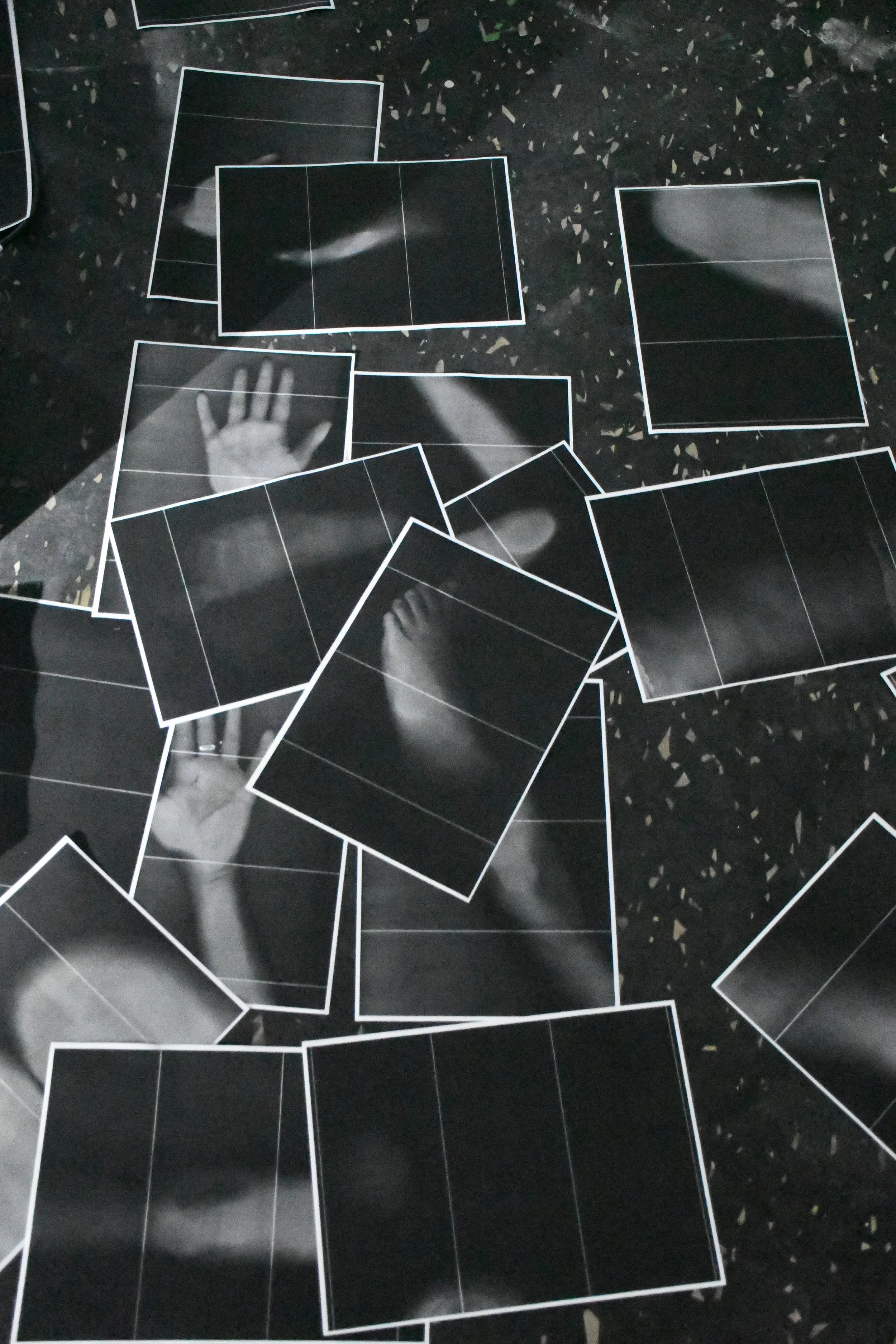
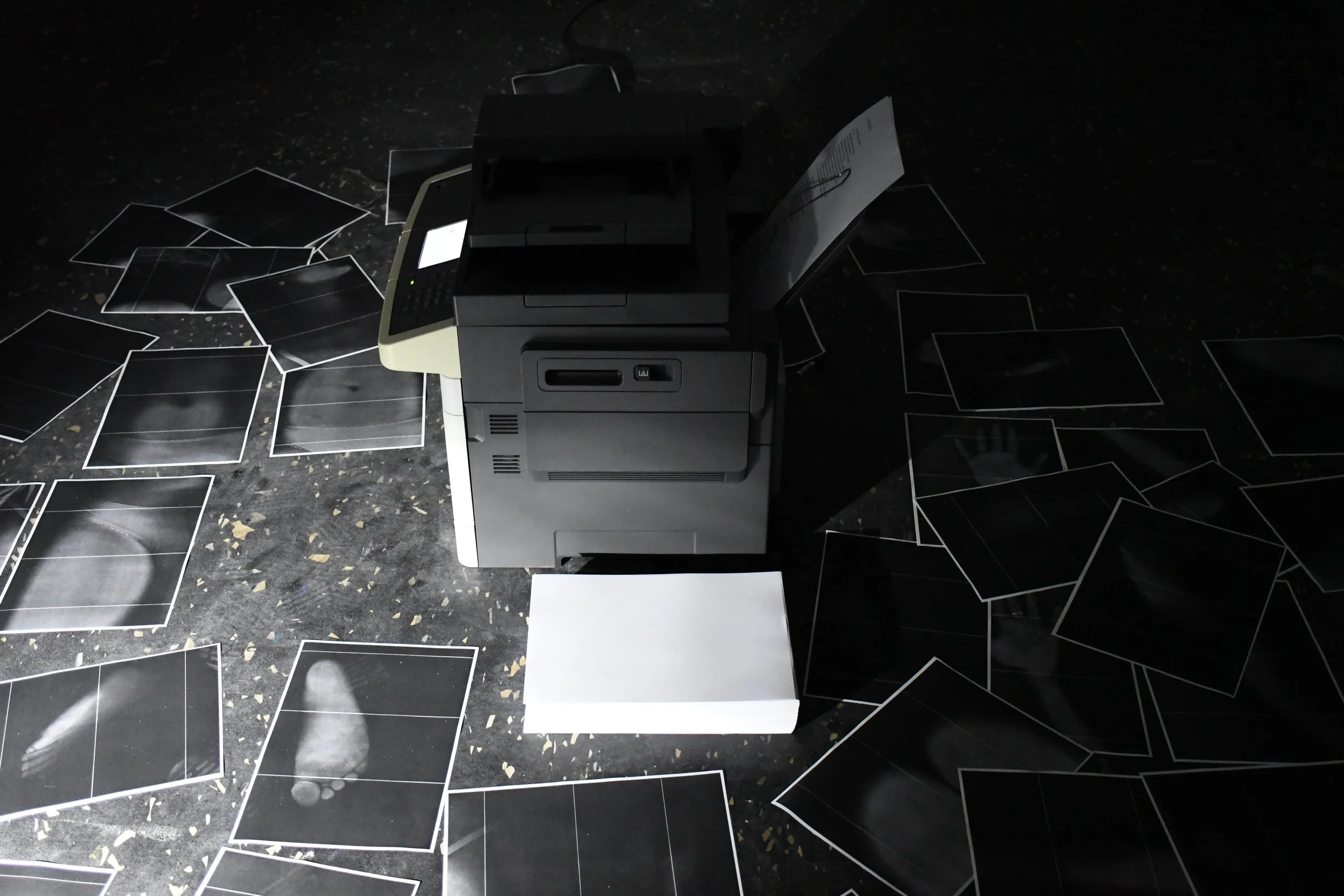
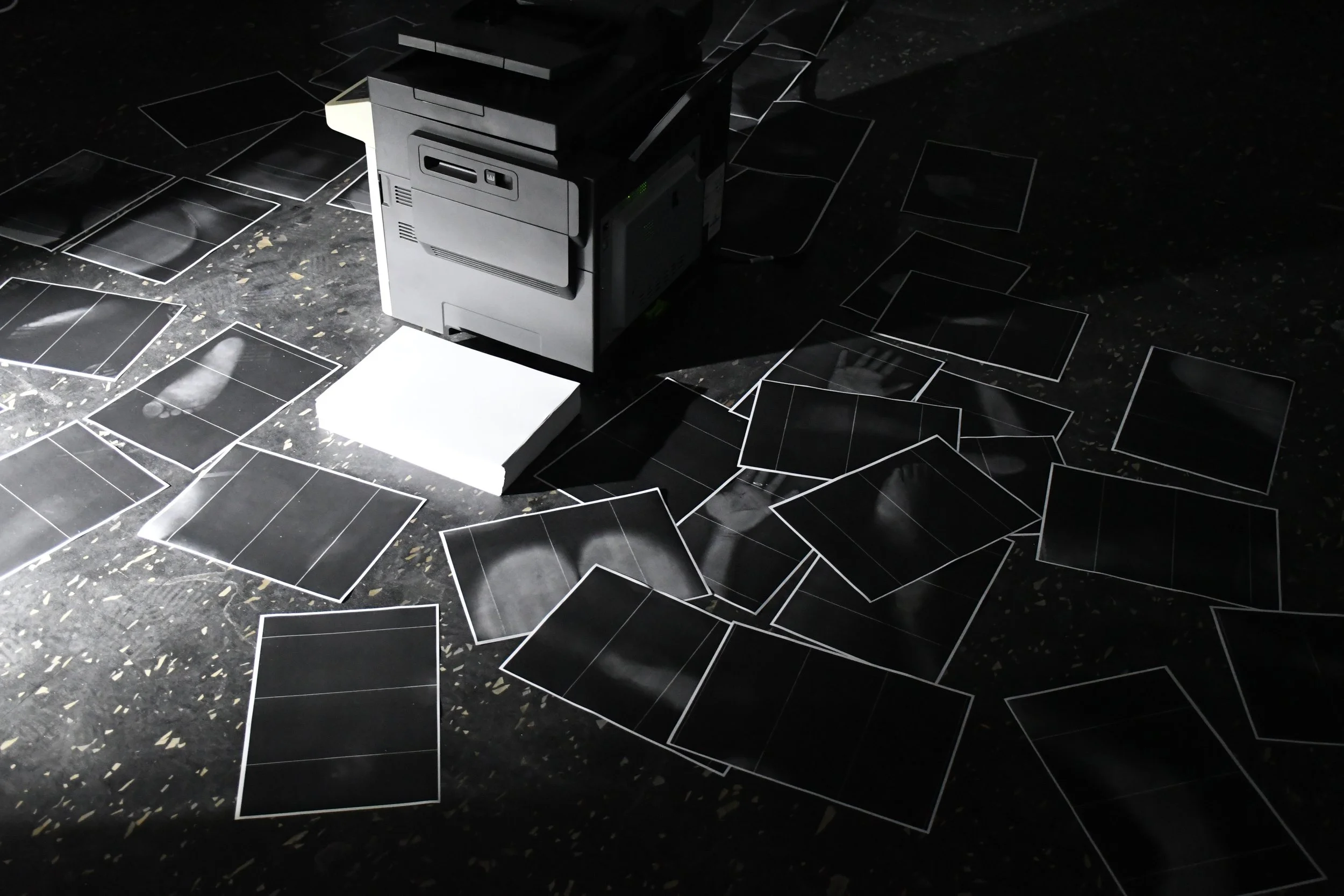
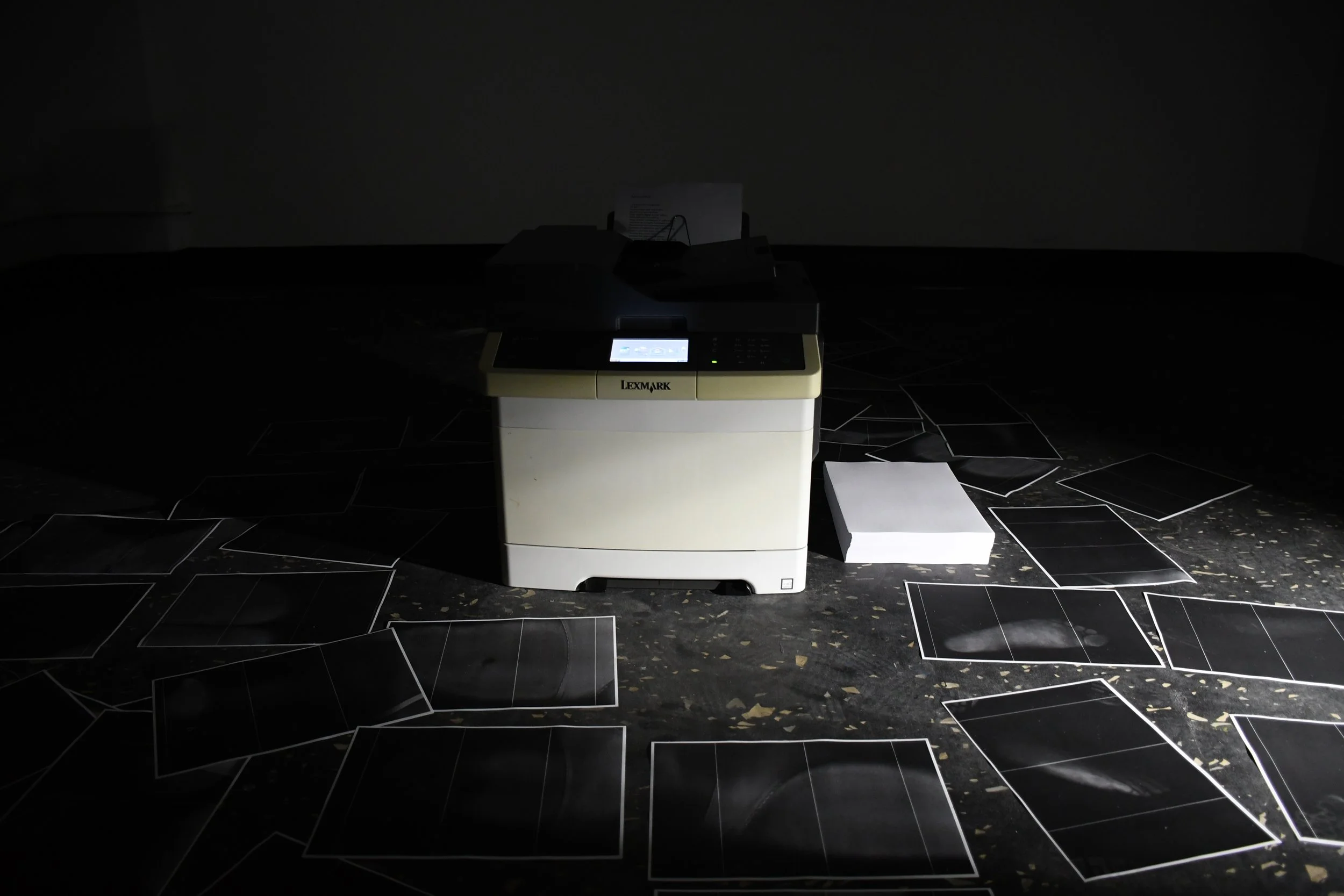
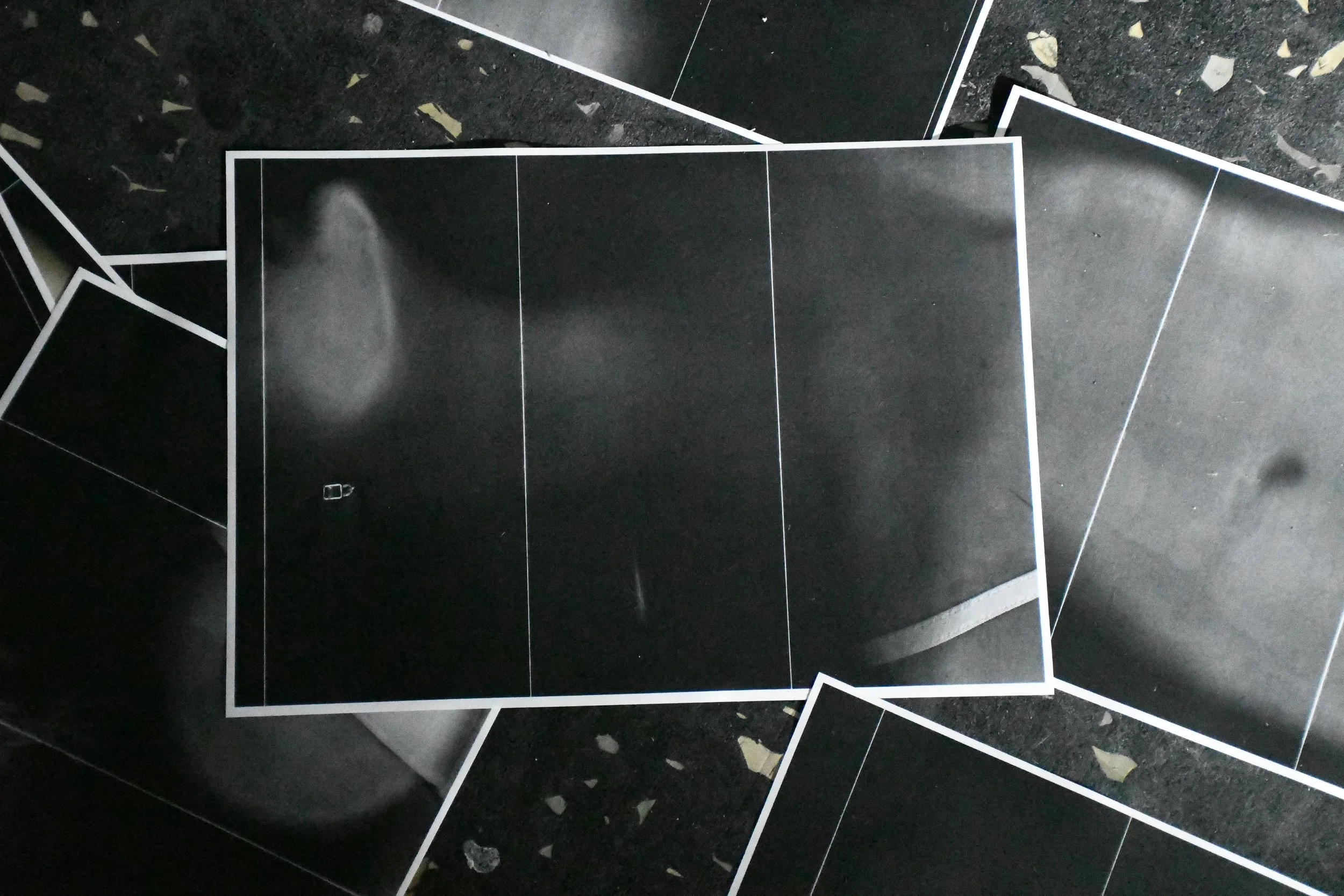
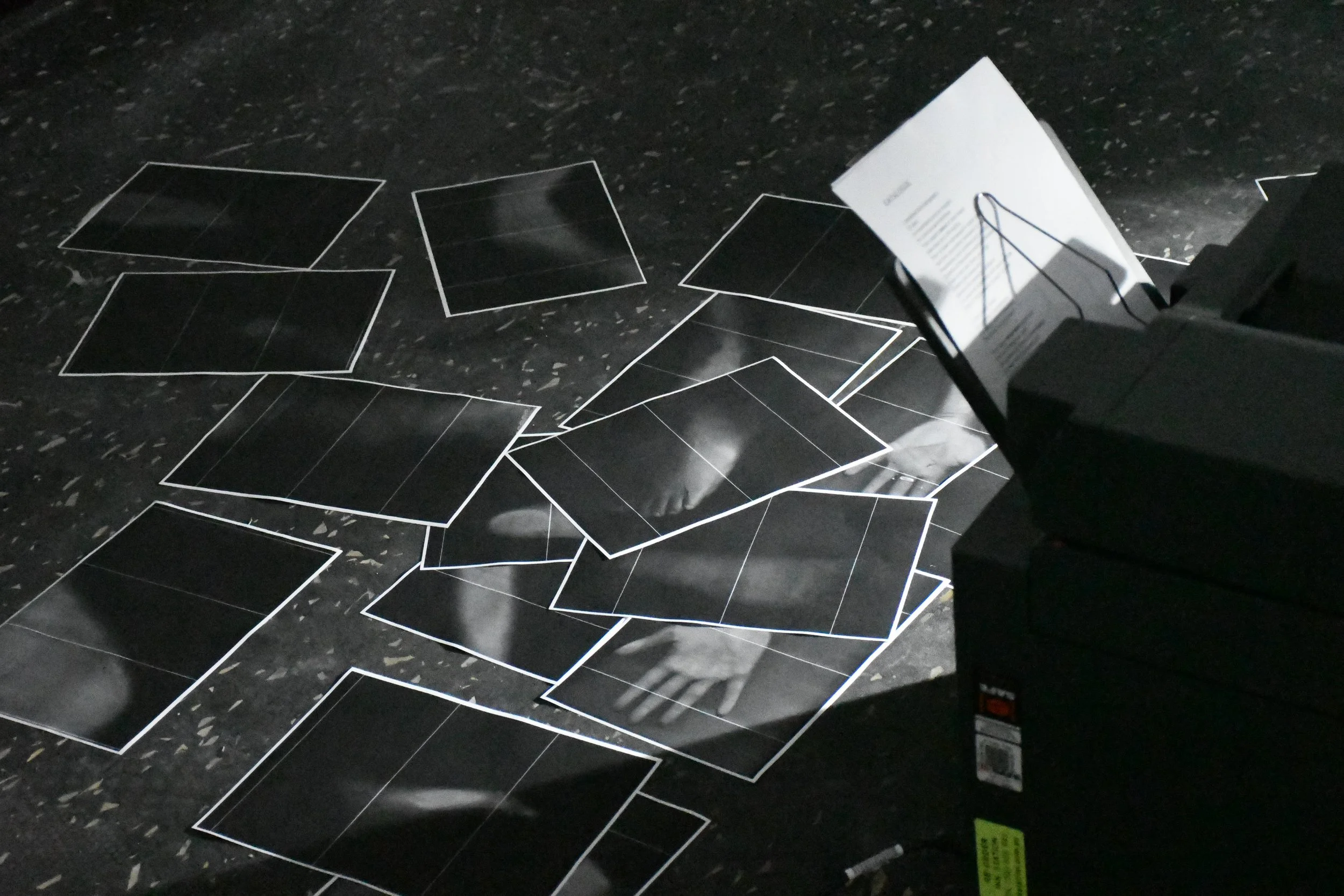
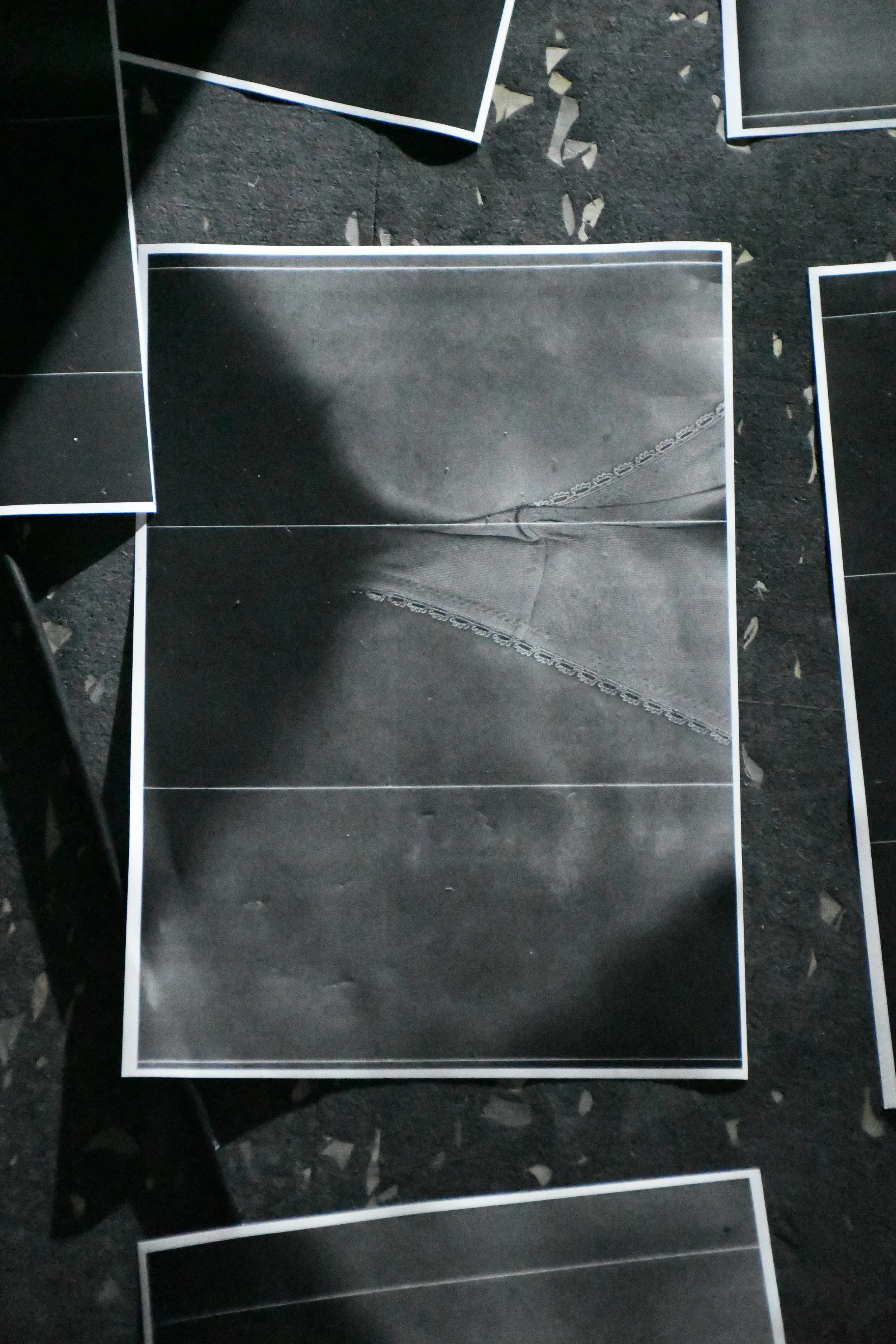
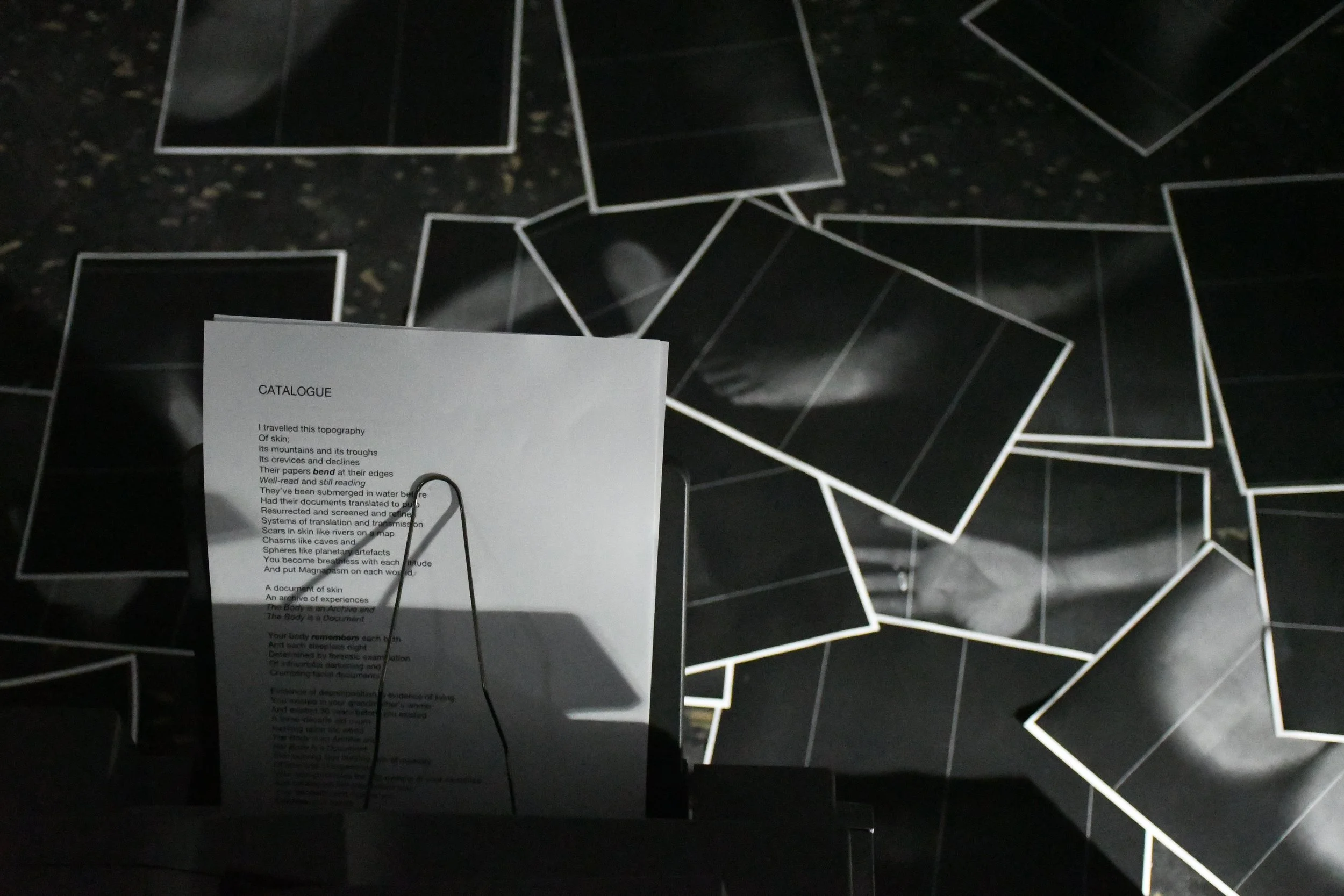
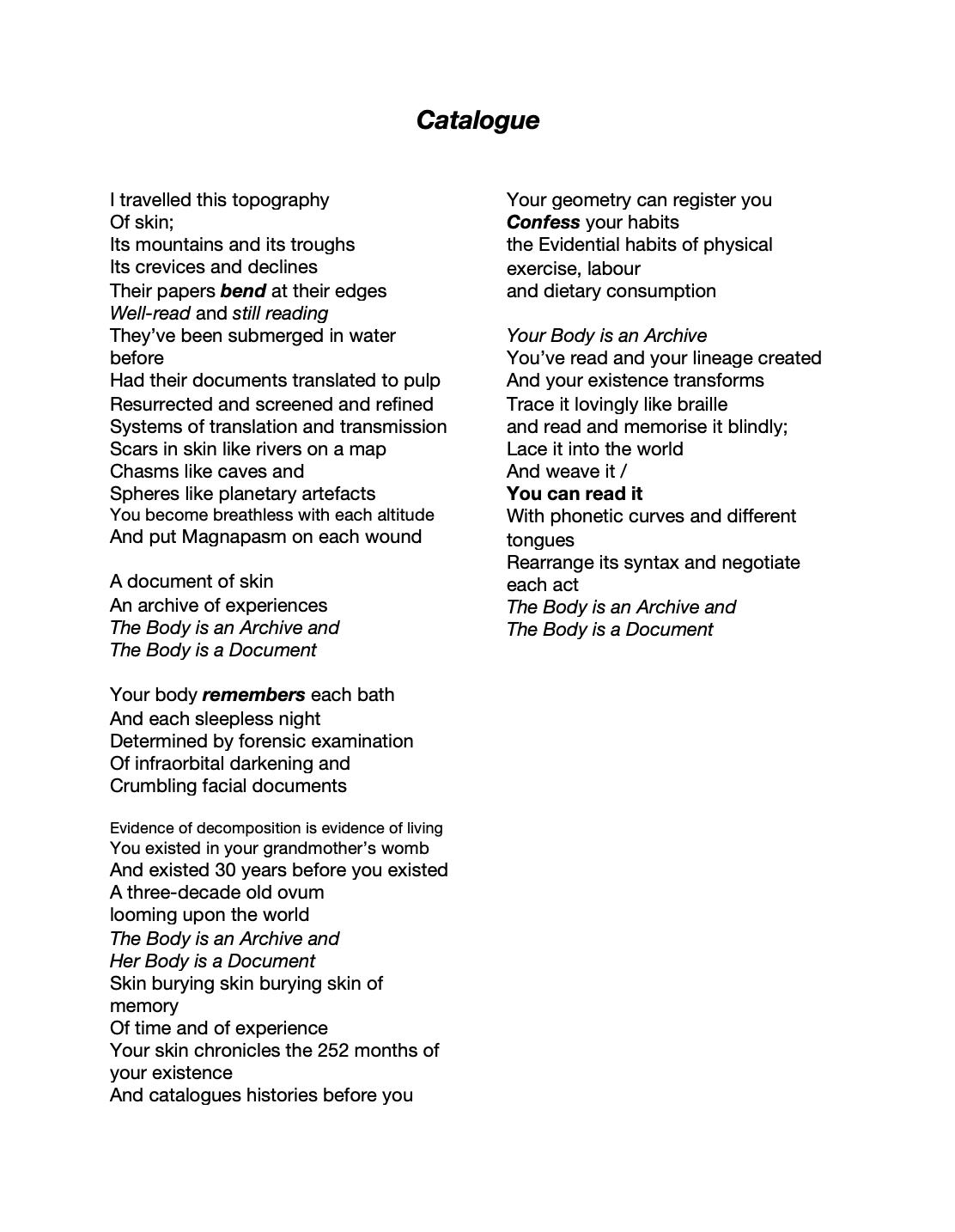
ABOUT THE ARTWORK
The floor is flooded with photographic glimpses of the body. Centred in the room, a printer translates the university satellite room into an office, a site for calculation, duplication, documentation and filing. The printer embodies an invitation, an act, a photocopy prelude to performance. For around two hours, I photocopied my body with this printer. Documented it. Engraved it in paper. Left traces of the body with traces of ink. This was a strenuous exercise, and proved difficult, as my body had to stretch, distort and contort.
My body artworks have always worked in systems and taxonomies, and more recently, I wanted to engage with the archive as a source material, concept, and something I could gather together by creating my own documents. Fernando De Campo’s ‘Pishing in the Archive’ (2021) and Natalie Harkin’s ‘Ode to the Board of Anthropological Research’ (2014) and Archival-Poetics have informed this artwork. Specifically, I have adopted how the archive can be discussed in performance, as they have exemplified. Campo uses bird watching techniques within an archival space to project the audience into an observational environment, while Harkin analyses archival documents by hand and highlighter, analysing and correcting errors.
My work underlines the body as a document, flesh evidence of histories and habits, something that can be traced, wounded, scarred, changed, loved and scrutinised. This is something that Cassia Glynn Bray’s essay ‘Bodypower: Confession and the Body’ investigates. As Bray and Julietta Singh states, ‘Bodies are dynamically archival in nature, down to our cells and DNA we are interconnected databases stockpiling information from our own and lifetimes past.” (Lorange, 2023) Here, Audiences are invited to witness the body’s excursion from 3D to 2D in performance. The documents that perforate the floor become a catalogue of my body for them to flip through, negating that performance must be a ‘live’ act, and rather providing a photographic illustration of its occurrence and aftermath. This aspect mirrors that of Eleanor Antin’s ‘Carving: A traditional Sculpture.’ (1972)